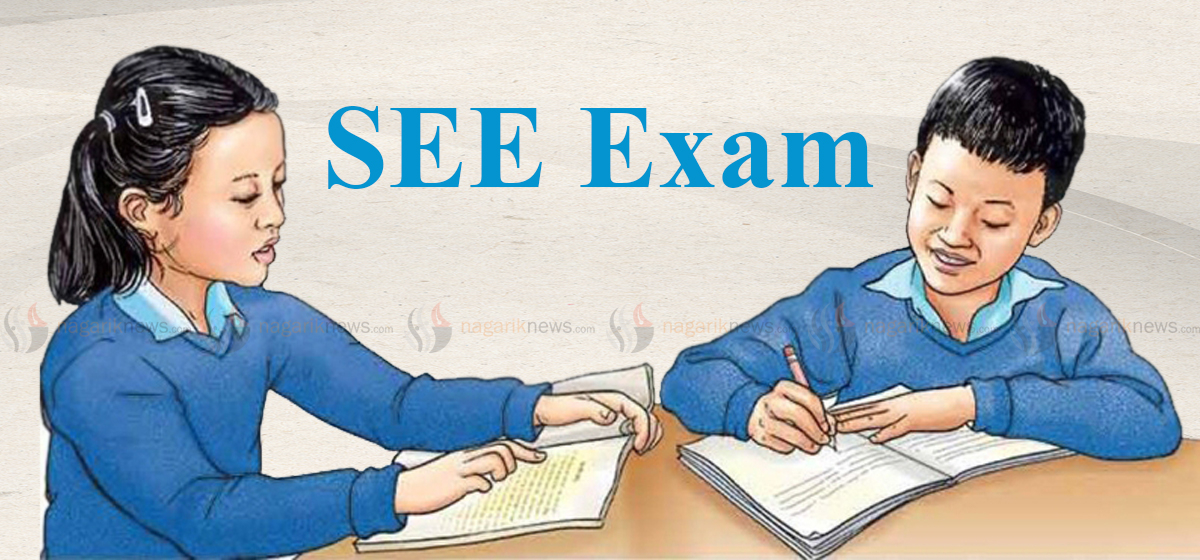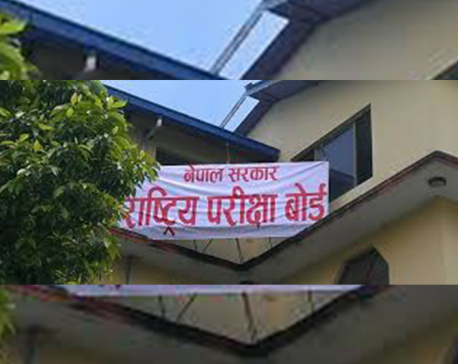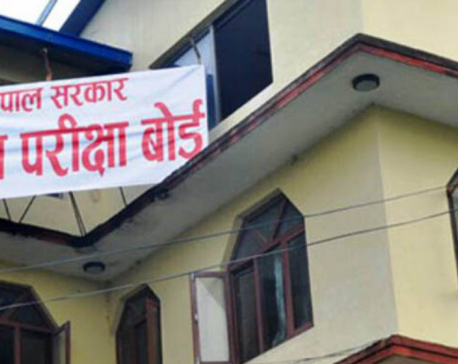
OR

KATHMANDU, July 28: The results of the Secondary Education Examination (SEE) for the year 2022 have worsened. Due to the COVID-19 pandemic which caused schools to remain physically closed for most part of the school year, the learning of the students had been severely affected causing the downfall in the results. The results of the examination conducted by the National Examinations Board (NEB) from the 22nd of April to the 3rd of May are weaker compared to that of 2019.
Heramba Raj Kandel, principal of Viswa Niketan Secondary School in Tripureshwar, commenting that teaching had not been effective due to the COVID-19 pandemic, said that the results worsened this year as even the online classes could not be effective. “The impacts of COVID-19 continued in 2022. In-person classes could only happen for three months. Even at Viswa Niketan, no more than 30 percent of students attended the online classes,” said Principal Kandel. “Studies were not completed as per the syllabus. The students could not get a lot of practice.”
In 2019, 3.83 percent of the total examinees had 3.6 to 4.0 as their GPA, but this year, only 1.94 percent of the students received a grade in this range. Similarly, three years ago, the number of examinees who had scored a GPA between 3.2 to 3.6 was 11.13 percent, but this time, it is only 8.4 percent. The number of examinees who got a GPA below this is more this year than in 2019.
Three years ago, 13.88 percent of the examinees scored a GPA between 2.8 to 3.2, while this year, the figure stands at 14.1 percent. The number of examinees who scored a GPA between 2.4 to 2.8 was 16.64 percent in 2019 while it is 18.31 percent this year. According to the board, 21.38 percent of the examinees in the year 2019 got a GPA between 2 to 2.4 while this year 22.74 percent of the examinees received a GPA in that range. There were 495,000 examinees in the SEE of 2018.
As a consequence of the COVID-19 pandemic, grades were given to the students on the basis of internal evaluation carried out by their respective schools in the years 2020 and 2021. This is why only the results given based on the evaluation of the student’s performance in the examination conducted by the NEB have been compared here. When comparing the results of the examination conducted by the board in 2019 and in 2022, it is clear that the overall level of learning of the students has languished.
In the results released by the board, the number of students who scored a GPA between 3.6-4, i.e. above 90 percent, is 9,633. This is only 1.94 percent of the total examinees. It is seen that the number of students receiving higher grades is decreasing while the number of students passing the examination with lower grades is increasing. The published results showed that female students were weaker than male students.
The number of female students receiving a GPA between 3.6-4.0 is 4,532 while the number of male students is 5,281. While in the year 2019, the total number of students who had obtained a GPA in this range was 17,580. It is observed that the female students were weaker even then. At that time, the number of female students who had received a GPA in this range was 7,513 while the number of male students was 10,067. On the whole, the number of students who received a GPA between 3.6-4.0 this time has decreased by 1.88 percent when compared to that of 2019.
Similarly, this time, 8.40 percent of the students received a GPA between 3.2-3.6 (80-90 percent) while this figure was 11.13 percent in 2019. The number of students receiving a GPA in this range decreased by 2.74 percent when compared to the figure of 2019. Even in this group, female students were seen to be weaker than their male counterparts.
Among the total number of examinees, the number of students who scored a GPA between 2.0-2.4, i.e. between 50 and 60 percent, is the highest, i.e. 112,733. This is 22.74 percent of the total examinees.
In 2019 as well, a majority of students received a GPA in this range. The students in this group represented 21.38 percent of the total examinees. Comparing the recent results with that of three years ago, it is clear that the number of students passing with lower grades has increased. The number of students scoring between 50 and 60 percent has increased by 1.36 percent over three years. In 2022, 18.31 percent of students have obtained a GPA between 2.4-2.8 (within 60-70 percent). This figure stood at 16.67 percent in 2019. Similarly, 14.10 percent of students got a GPA between 2.8-3.2 (70-80 percent) this time. In 2019, this percentage was 13.88. The number of students receiving a GPA in this range has increased by 0.22 percent this time.
Durga Aryal, member secretary of the NEB, published the results of SEE 2022 at a press conference organized yesterday and commented that this time’s results were satisfactory compared to the SEE of 2019. Aryal said, “The SEE in 2022 was conducted in the middle of the COVID-19 pandemic. The students were in panic. Although the students did not complete the syllabus, the question papers were the same as before. Considering all this, the results of this time can be considered satisfactory.”
Excellent Results in Bagmati
The students in Bagmati Province have achieved excellent results in this year’s SEE. There are more students in the province who have received a GPA between 3.6-4 when compared to other provinces of the country. As much as 47.77 percent of students in the province have obtained a GPA in this range. Students from Karnali Province are among those who have the weakest results. Only 1.18 percent of the students in the Karnali region received a GPA between 3.6 and 4. Similarly, 15.89 percent of students in Madhesh Province, 12.32 percent in Province 1, 8.13 percent in Gandaki Province, 12.66 percent in Lumbini Province and 2.02 percent in Sudurpaschim Province have obtained a GPA between 3.6 and 4.
Examination Controller Arjun Rayamajhi said that results in the Bagmati Province were good as the province has more urban areas and schools with better facilities. “There were 36,000 examinees from Kathmandu. Since accessibility to online means is easier here, the management in the schools was also agile. Because of this, the results of students in Bagmati Province are overall good,” said Controller Rayamajhi, “But the overall results show the learning of the students has degraded.”
This reveals the government should emphasize improving the curriculum, training the teachers as per the new curriculum and regularizing the classes in schools. Only through such efforts can the learning of the students improve.
You May Like This

NEB meeting at 2 PM to publish SEE results
KATHMANDU, July 27: Secondary Education Examination (SEE) results are going to be published today. A National Examinations Board (NEB) meeting... Read More...

SEE results to be published today
KATHMANDU, July 27: The National Examinations Board (NEB) is all set to publish results of this year's Secondary Education Examinations... Read More...

SEE results by mid-July; Rs 98.8 million spent on examining answer sheets
KATHMANDU, July 6: The results of the Secondary Education Examination (SEE) conducted by the National Examination Board (NEB) in April... Read More...




Just In
- Health ministry to conduct ‘search and vaccinate’ campaign on May 13
- Indian customs releases trucks carrying Nepali tea, halted across Kakarbhitta
- Silent period for by-election to begin from midnight
- SC issues short-term interim order to govt and TU not to take immediate action against TU legal advisor Khanal
- National consultation workshop advocates to scale up nutrition smart community in Nepal
- Patan High Court issues short-term interim order to halt selection process of NTB’s CEO
- NEPSE inches up 0.15 points; daily turnover increases to Rs 2.53 billion
- Bagmati Govt mandates tri-lingual signboards in offices














Leave A Comment